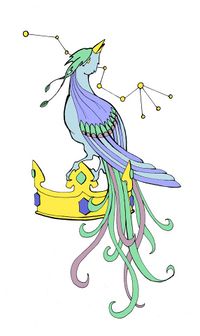Thirst of the Devourer

While Agramant is subject to the enmity of the Imperial Conclave, it is illegal to perform this ritual.
Rules
Winter Magnitude 24
Urizen Lore
This ritual is part of Urizen lore rather than Imperial Lore. Any Urizen character with the appropriate lore can master or perform this ritual. A character from another nation who mastered the ritual before it became part of Urizen lore may still perform it, but does so under the usual rules for performing a ritual learned from a ritual text.
Performing the Ritual
Performing this ritual takes at least 2 minutes of roleplaying. This ritual targets a character, who must be present throughout. The performance must include the invocation of Agramant by at least three of his commonly known names.
This ritual is an enchantment. A target may only be under one enchantment effect at a time.
Effects
Whenever the target successfully delivers an IMPALE in melee, they immediately regain up to three lost hits. The ritual does not grant the target any ability to call IMPALE.
While under this enchantment, the target experiences a roleplaying effect: Whenever you regain hits due to this enchantment, you feel a rush of power and confidence. Once you have used this ability once, you feel an urge to experience it again, even when you are not injured.
The effect lasts until the start of the next Profound Decisions Empire event.
Assurance
This ritual loses all power for as long as the Empire outlaws capital punishment. It regains its power if capital punishment is reinstated.
Description
This enchantment clearly calls on similar resonances as Coil of the Black Leech, there are some suggestions in the original text that it was codified at a similar time. How trustworthy those notes are is difficult to say; the Black Drop Society believed that it was a counterpart to that ritual and claimed to have seen "evidence" that the other ritual also draws on the power of Agramant. But the Black Drop Society were deep in the thrall of the eternal, and their claims cannot be considered reliable.
At first blush, the ritual appears to draw its power from the injury done to the target but in actuality, much like the Crimson Feast, the power comes from Agramant. The eternal encourages people to prey on the weak, to put their needs before those of others, and to take what they need without concern for those they harm in the process. The assurance appears quite dissonant for Agramant, the Black Drop Society were of the opinion that the eternal wants criminals who get caught to be punished. Not because he believes in the law, but because he believes that those who are too weak or foolish to stand against it deserve no mercy.
Thirst of the Devourer entered Urizen lore shortly before the Winter Solstice 384YE, as part of a book entitled Ceremonies of the Black Drop Society. The attendants of the Great Library were deeply uncomfortable with the rituals in that book and their presence among Urizen lore, more due to their illegal nature than any sentimental concerns about their origin. They were apparently all submitted at the same time as Treacher's Quill, but Phaleron itself intervened to delay their appearance in lore while it pondered how best to respond. In the end, it decided to do the only reasonable thing; present the rituals to the Urizen as part of their lore as agreed when the lore was established. The Celestial Library does not enjoy causing trouble for its Urizeni allies, but the Gift of Knowledge is available to every Imperial citizen; it cannot pick and choose who can contribute rituals via the ritual.
Common Elements
The ritual requires an evocation of Agramant, meaning that it has a strong goetic component as it requires the invocation of three of the eternals names as part of the casting. For an astronomancer, the ritual has obvious resonance with the Claw like several of the other rituals associated with Blood-on-the-Snow. Likewise, a dramaturge would find the ritual resonant with the Captain, but also the Mountebank who often personifies primal forces. The Blade is an obvious tool to use in the performance, bound up as it is with imagery of violence.
Further Reading
- Childer of the Black Drop - some history about the Childer of the Black Drop